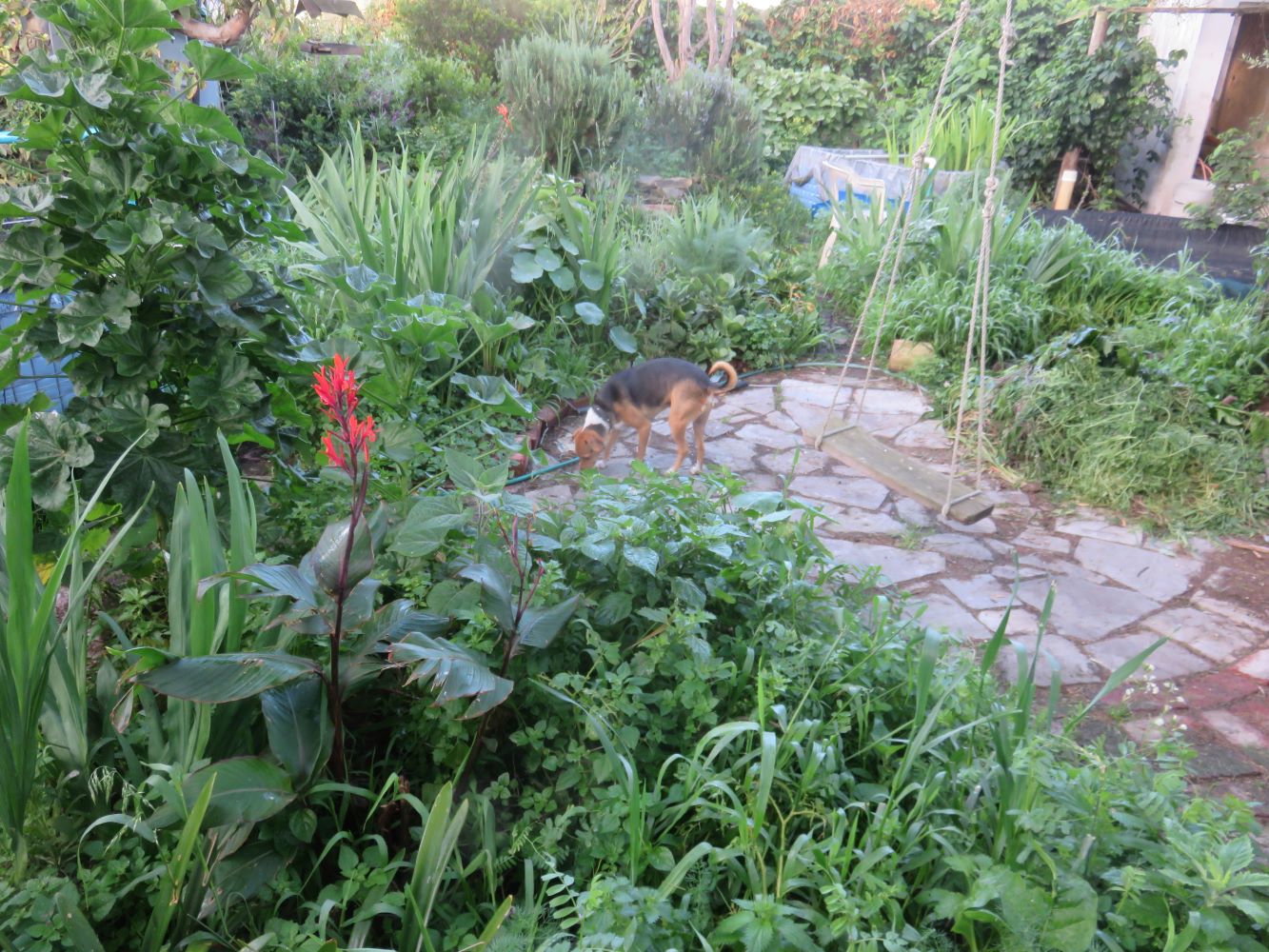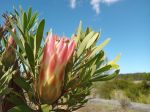Dear Reader, in this age of AI created content, please support with your goodwill someone who works harder to provide the human-made. Sign up in the righthand column or bottom of this page. You will receive my hand illustrated monthly newsletter RESTORE NATURE and access to the biodiversity garden design course as I write...and nothing else, I respect your time.
Food garden touring with Guerilla House
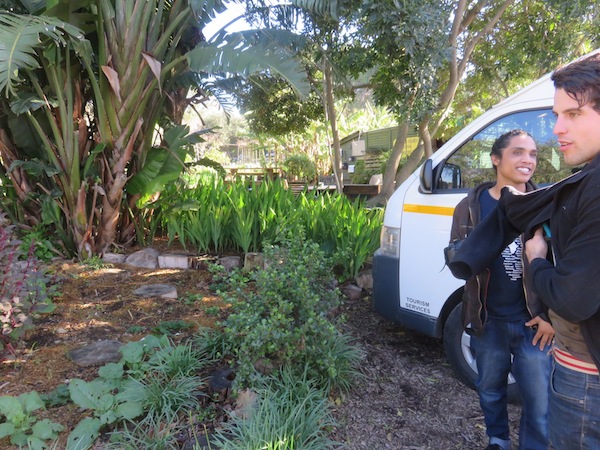 at Soil for Life
at Soil for LifeThis week I did some garden touring with Guerilla House quite unexpectedly.
I went to my weekly volunteering day to find they were taking some university students who were learning about permaculture to look at food gardens in Cape Town.
It was the student’s last day in Cape Town so it was a memorable occasion for me, and turned out to be most inspiring.
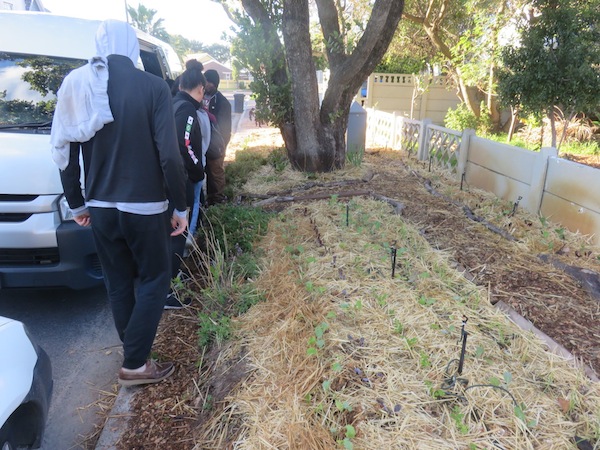 leaving the Imraan's garden for a day of garden touring
leaving the Imraan's garden for a day of garden touringThe day took in four important urban food gardens in the city, that I’ve been longing to visit: the Rastafarian Community Garden, Soil for Life, SEED and Moya we Khaya.
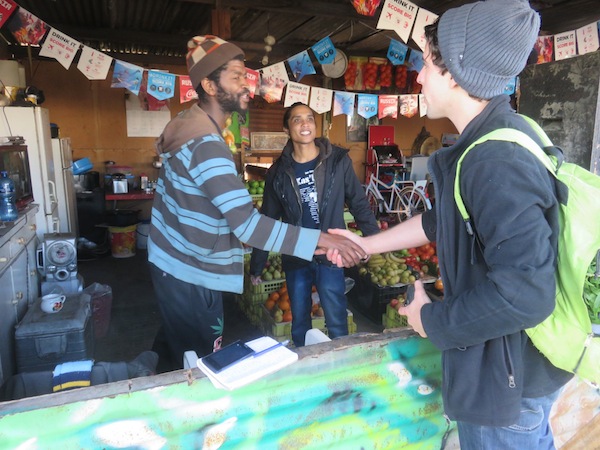 Meeting Daniel in the shop next to the Langa food garden
Meeting Daniel in the shop next to the Langa food gardenThe Rastafarian Community Garden in Langa
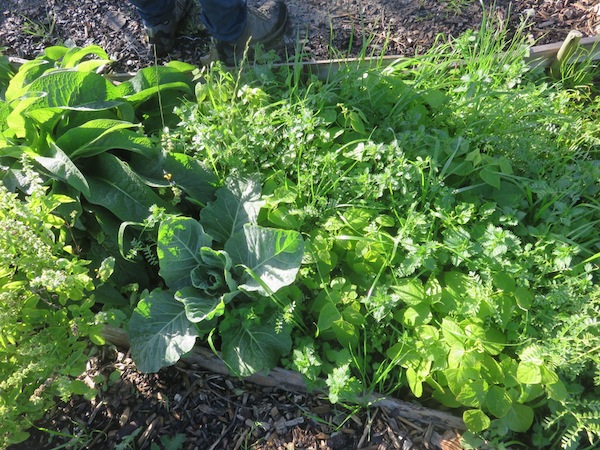 A triumph of the fertility work done on sand
A triumph of the fertility work done on sandFirst off was the Rastafarian Community Garden in Langa. I was there a few months ago to attend the Guerilla House workshop ‘Make it Fertile’ that dealt with about a dozen ways of increasing soil fertility. The gardeners there have been applying these principles. I gasped when I saw how the garden had grown and vegetative cover had increased, and it was looking so lush and green.
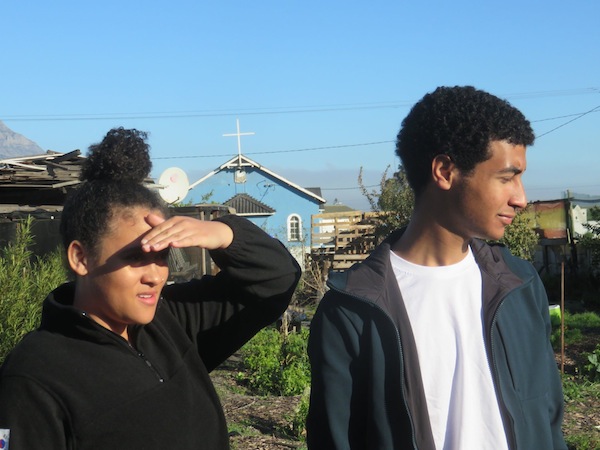 We start the food garden touring in the dewy early morning
We start the food garden touring in the dewy early morningI took photographs of all the different plants I saw, and noted the varieties, and got to about 60 different plants and counting. Its such a fabulous thing to see so much diversity in such a new garden. I think its less than a year old now.
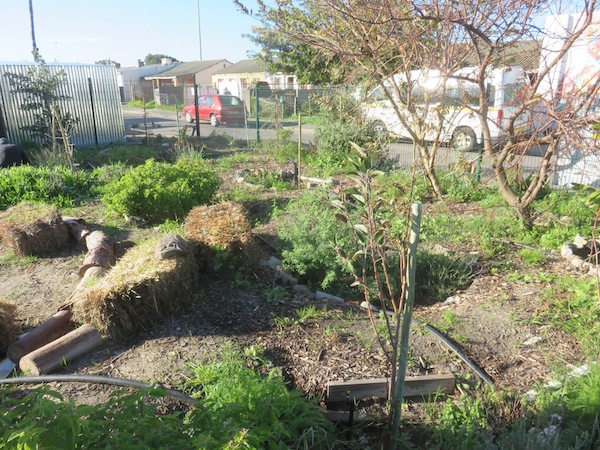 an overview of the urban gardening project in Langa
an overview of the urban gardening project in LangaSoil for Life in Constantia
The next place we visited was Soil for Life in Constantia. It has been going for over two decades. Imraan told us that this is where he first learned about organic gardening. I hope I’ll be able to intern there too, even if its just to ‘skollie’ plants (hee hee), because there I got to about 80 plants and counting.
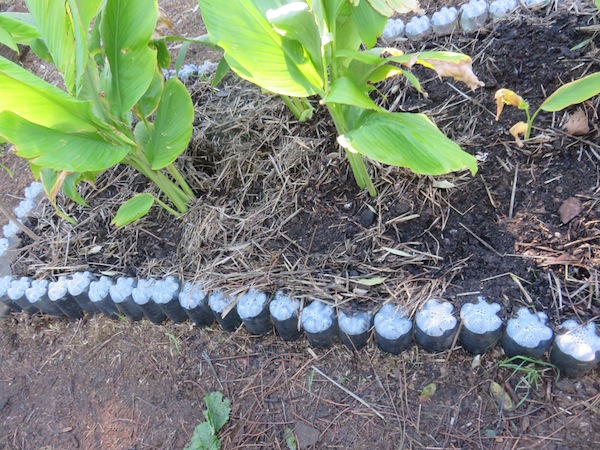 The dark black soil and passive irrigation in tumeric patch
The dark black soil and passive irrigation in tumeric patchI’ve been growing tumeric on my windowsill and then in my gray water grow beds. The tumeric at Soil for Life was so big I thought they were banana trees at first ! Notably the soil in the tumeric bed was very black, it looked like a very high ratio of vermicast or rotted manure had been added, and the bed was surrounded by passive irrigation in the form of water filled bottles which had been turned cap down. The caps probably have little holes in them to supply a constant trickle of water on demand.
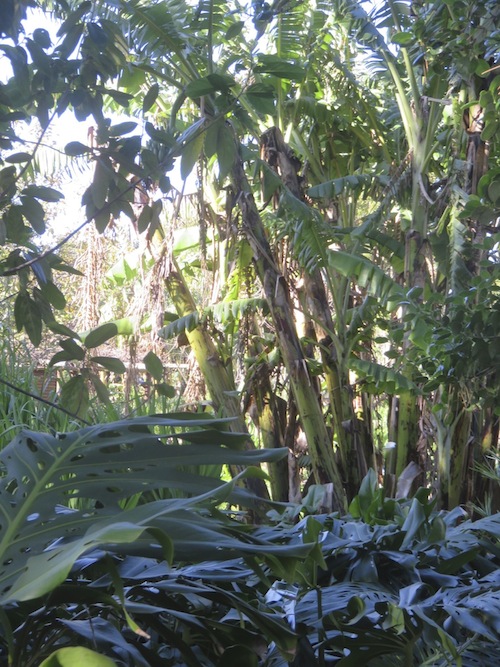 exotic vegetation thrives in a massive banana grove exotic vegetation thrives in a massive banana grove |
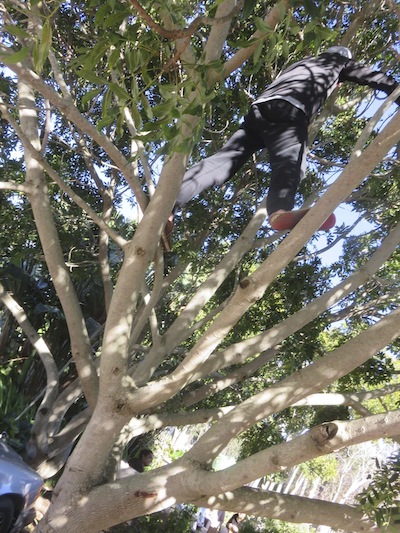 the garden is also teeming with noisy exotic fauna the garden is also teeming with noisy exotic fauna |
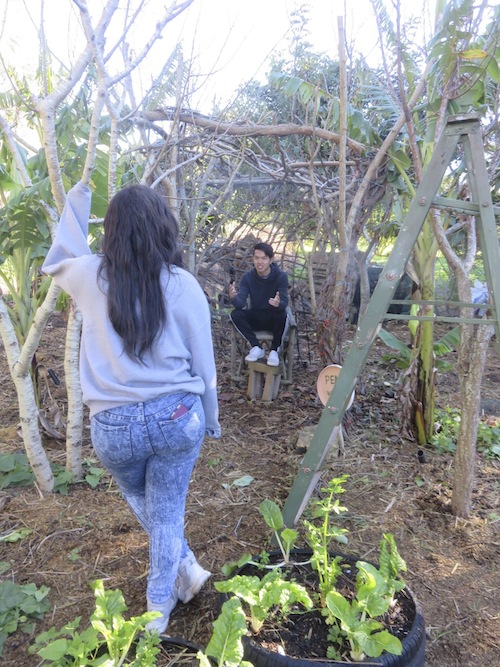 and even the conversations on this soil are fertile
and even the conversations on this soil are fertileFood garden touring and its lessons in this city
Something which made the food garden touring so interesting was the question of soil. Constantia is on clay, site of some of the oldest wine lands at the Cape. Here nearly anything grows according to Josh and the soil is highly water conservative and full of nutrients. They are so lucky about their location. The other gardens we saw on the day were all on deep Cape Flats sand, like my garden and Imraan’s garden and they have to have a lot more fertility work done to them for a good yield.
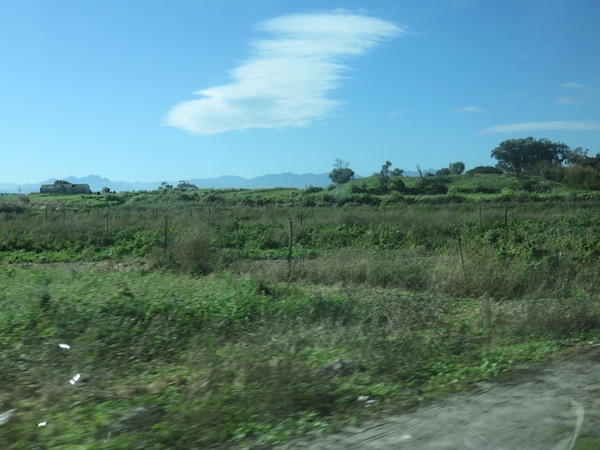 a lush corner of the Philippi urban farming area
a lush corner of the Philippi urban farming areaAfter Constantia we headed through Philippi, the breadbasket of Cape Town, as Imraan called it, on our way to SEED in Mitchell’s Plain. We went on a back road I’ve never traveled before on my explorations and it was hard to imagine we were in the middle of a metropolis. One would not imagine garden touring to be political, but it did often touch on politics, power, and issues like group areas and who got the good soil in the metropole.
Food growing is globally highly political too. We heard of the controversy around the possible loss of much of Philippi to urban development, and moments of heartache ensued as I was reminded of the long exhausting campaign to save the Philippi Horticultural Area headed by Nazeer Sondae and others, as I saw some beautiful green parts of Philippi for the first time, and new they would not be thus for long.
 The green covered sand hills of Rocklands, Mitchelll's Plain
The green covered sand hills of Rocklands, Mitchelll's PlainTalk about sand, we approach this section of Mitchell’s Plain passing sand dunes as high as small mountains which are covered with stabilizing indigenous vegetation that I love so much. It is so beautiful and functional, holding up through the worst drought in a century, preventing the sand from blowing away, and judging from the greenness of the area, harvesting water from the sea air on its myriad tiny hairs and spiky fine leaves.
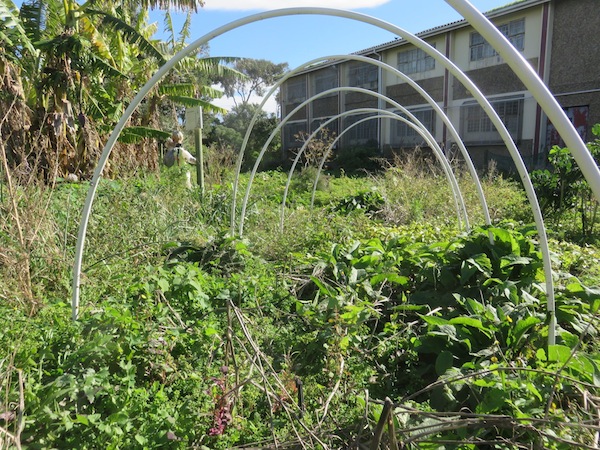 Some of the equipment in the production garden at SEED
Some of the equipment in the production garden at SEEDSEED
in Mitchell's Plain
When we got to SEED I was excited to see this amazing hub of urban permaculture. We saw the seed garden that I wrote about in a previous article. It’s a garden in which so many young people in Cape Town got their first green education and it deserves the TLC that Imraan and Josh are going to be giving it.
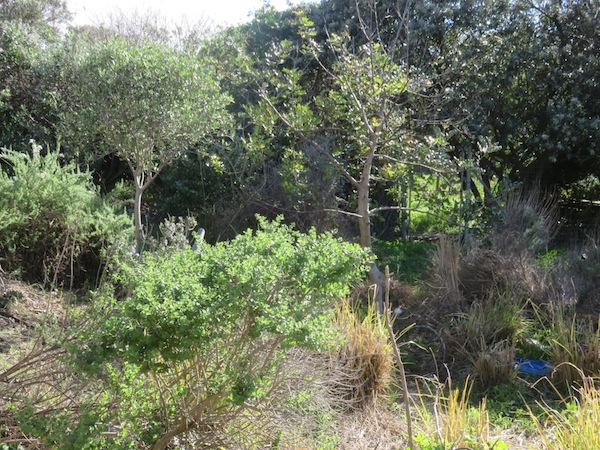 Part of the food forest at SEED, thriving despite drought
Part of the food forest at SEED, thriving despite drought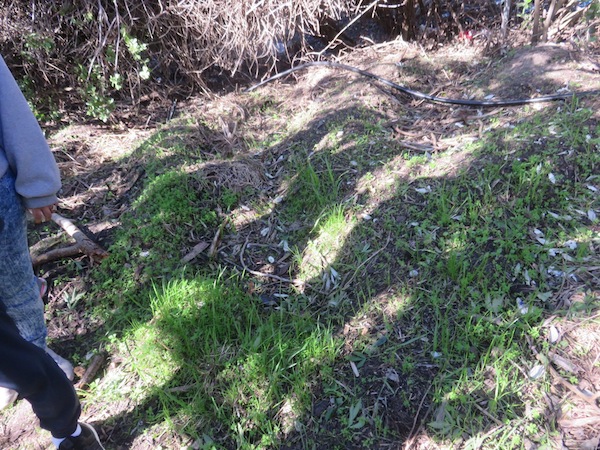 Low maintenance done by Guerilla House with tree pans
Low maintenance done by Guerilla House with tree pansThe food forest along the perimeter was in a much better state than the annual vegetable garden, even after the drought, showing how resilient agroforestry can be. It has also recently been tended by Josh and Imraan, where they dug some tree pans to hold water around the trees and it was holding up really well. I hope I will also be involved there when they go once a month to do some maintenance.
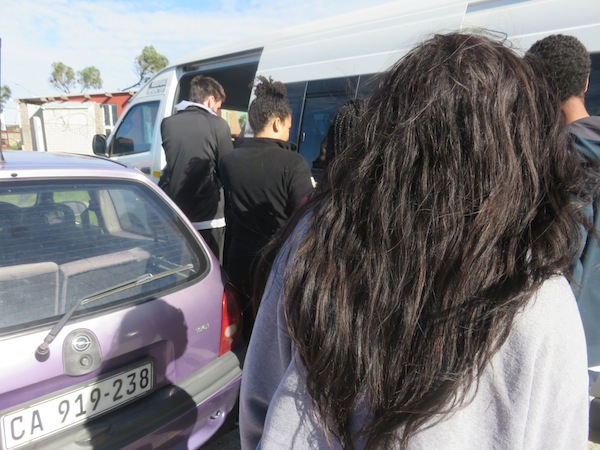 Leaving SEED
Leaving SEEDMoya we Khaya
in Khayelitsha
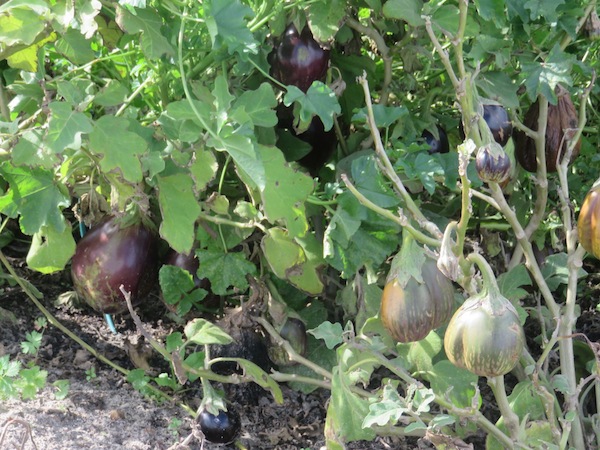 Such a fruitful place
Such a fruitful placeAfter that we headed east along Spine Road to Khayelitsha and Moya we Khaya, translated as spirit of home by Xoliswa who welcomed us to the garden. My camera was running out of juice by this time, so I only took a few pictures, but you will see that the garden is amazingly fertile. One of the students remarked that farmers in the US should not be complaining about soil, when you see what can be done with organic farming even here.
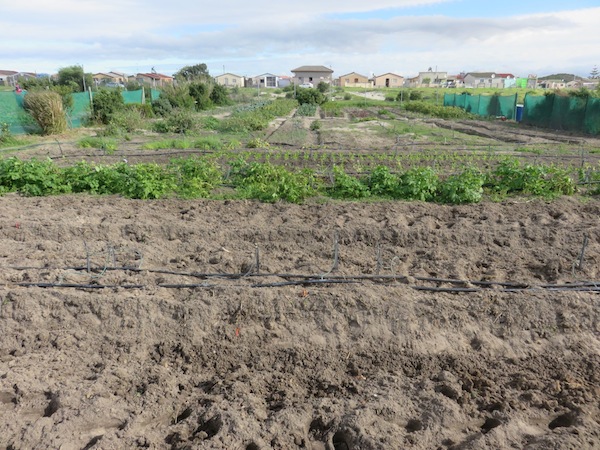 another urban gardening triumph in Khayelitsha
another urban gardening triumph in KhayelitshaIn Khayelitsha, like Mitchell’s Plain, the sand is meters deep, and our soils are some of the most ancient, leached and infertile ones in the world. Add organics, and voila…. Unbelievable abundance. The whole group were impressed at the existence of the gardens we had seen in areas with few financial resources.
I’d add that the environmental resources are also not conducive, and growing things here is a triumph of the ‘can do’ spirit and resilience of Khayelitsha residents. Food garden touring involves painful insights about this anomalous country, but in another way it is also a very positive experience.
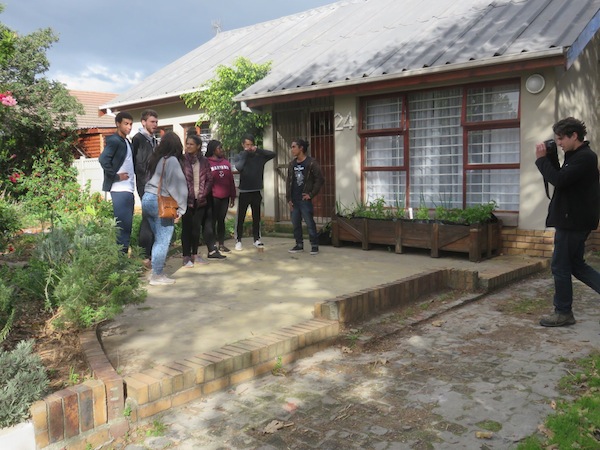 taking the parting shot back at Imraan's garden again
taking the parting shot back at Imraan's garden againWe headed home, rounded off the garden touring with some sharing. It was so enriching to see these gardens through the eyes of people from another country. I hope we were all left with hope and inspiration. For me I cling to these hints that things can be rebuilt and there will be a better day one day under the watching blue mountains ringing this sea of sand known as the Cape Flats that is the scene of so much bad history, bloodshed, deprivation and environmental degradation.
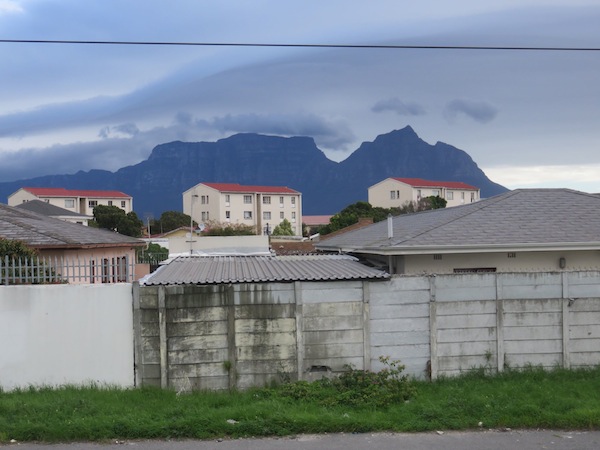 view from the taxi going home
view from the taxi going home------
home page for lots of links to useful information on natural gardening and permaculture
------
gardening volunteerism and urban farming
------
other pictures from the day: a food garden touring album
------
Guerilla House contact on facebook
Restore Nature Newsletter
I've been writing for four years now and I would love to hear from you
Please let me know if you have any questions, comments or stories to share on gardening, permaculture, regenerative agriculture, food forests, natural gardening, do nothing gardening, observations about pests and diseases, foraging, dealing with and using weeds constructively, composting and going offgrid.
SEARCH
Order the Kindle E-book for the SPECIAL PRICE of only
Prices valid till 30.09.2023
Recent Articles
-
garden for life is a blog about saving the earth one garden at a time
Apr 18, 25 01:18 PM
The garden for life blog has short articles on gardening for biodiversity with native plants and regenerating soil for climate amelioration and nutritious food -
Cape Flats Sand Fynbos, Cape Town's most endangered native vegetation!
Apr 18, 25 10:36 AM
Cape Flats Sand Fynbos, a vegetation type found in the super diverse Cape Fynbos region is threatened by Cape Town's urban development and invasive alien plants -
Geography Research Task
Jan 31, 25 11:37 PM
To whom it may concern My name is Tanyaradzwa Madziwa and I am a matric student at Springfield Convent School. As part of our geography syllabus for this
"How to start a profitable worm business on a shoestring budget
Order a printed copy from "Amazon" at the SPECIAL PRICE of only
or a digital version from the "Kindle" store at the SPECIAL PRICE of only
Prices valid till 30.09.2023

